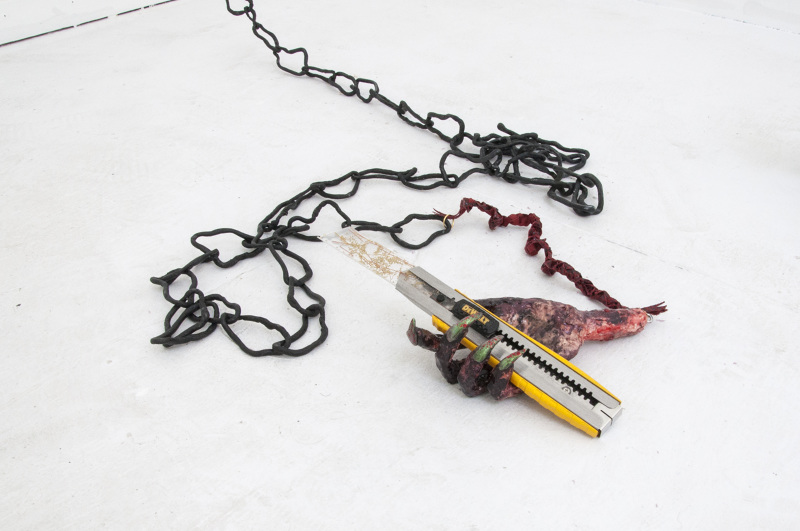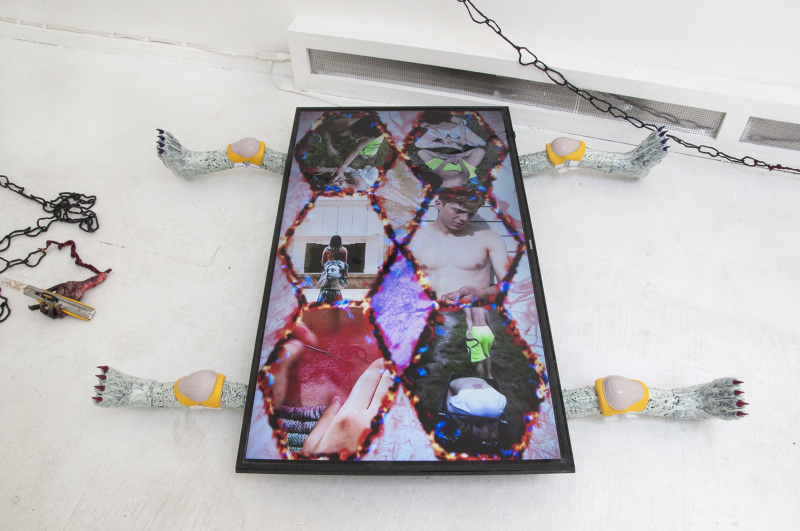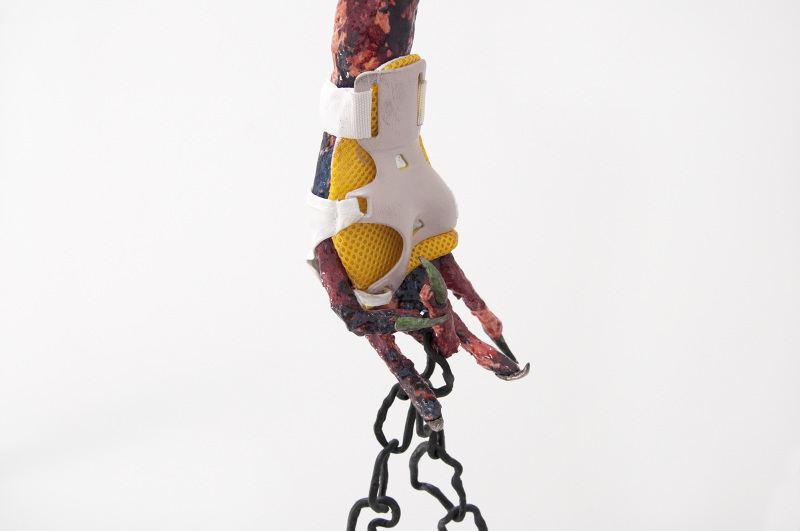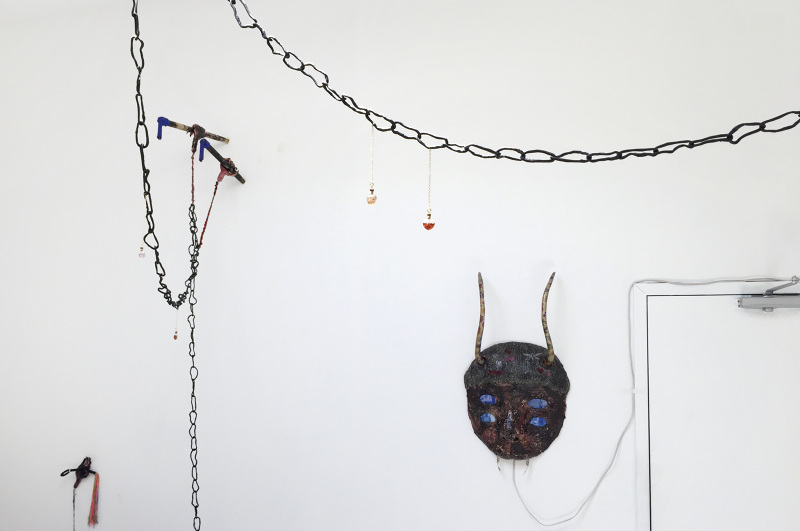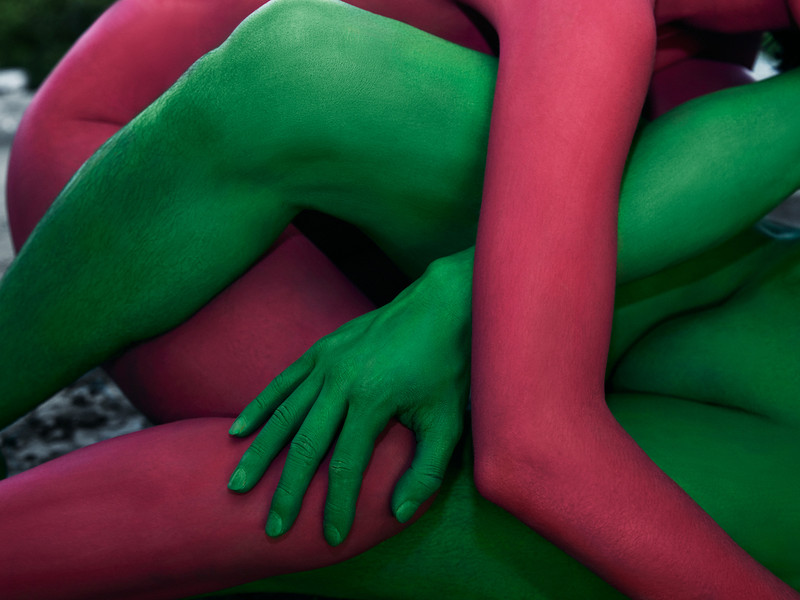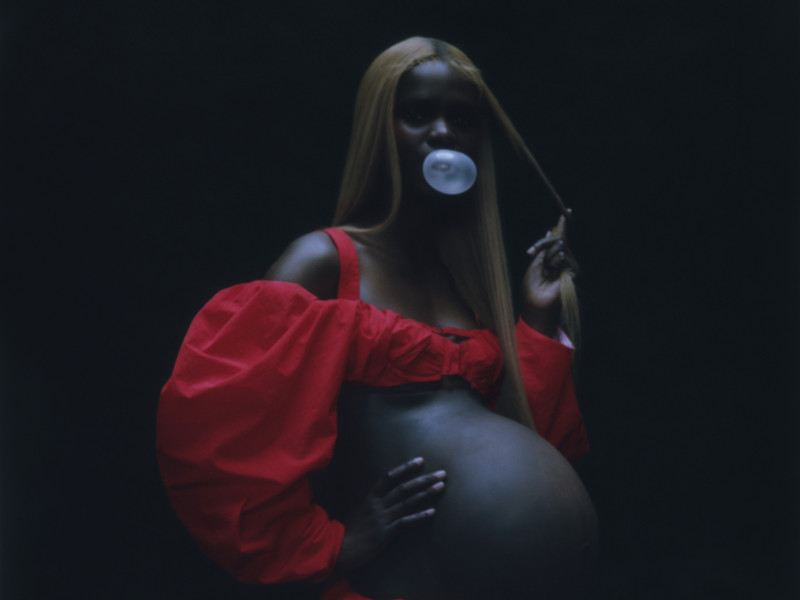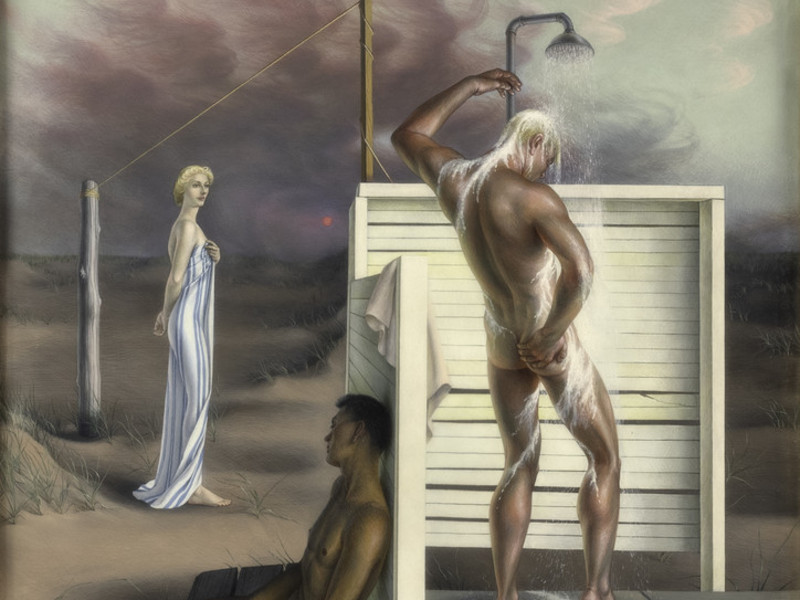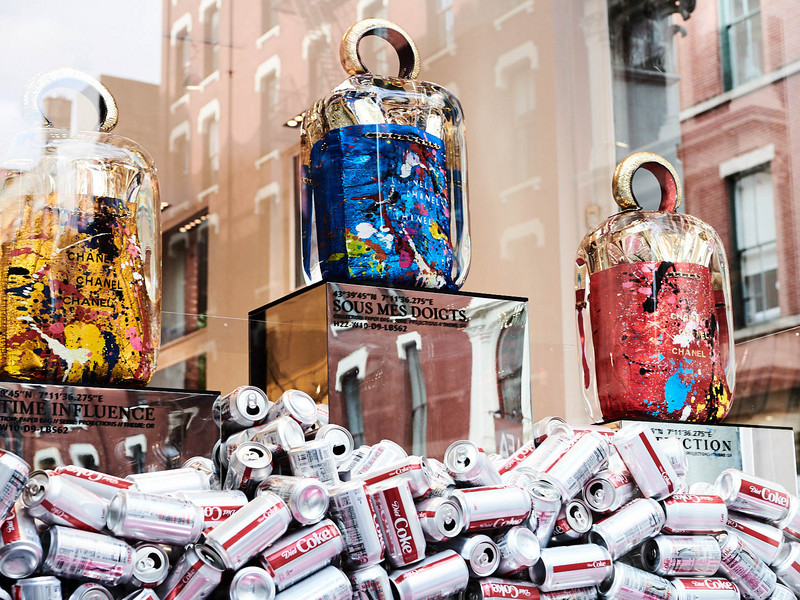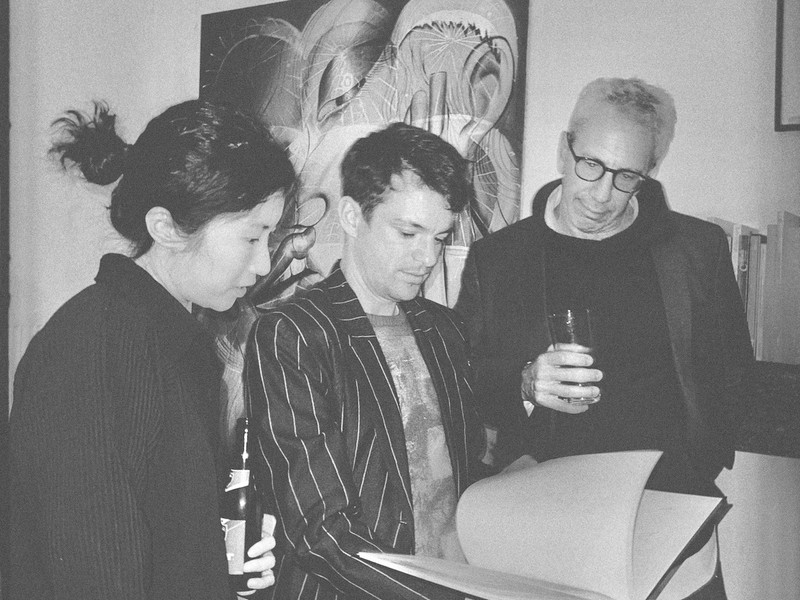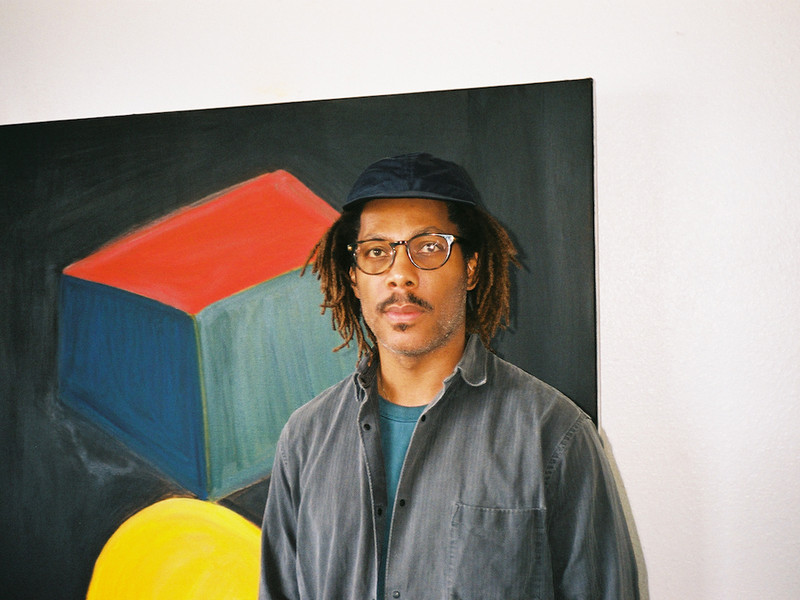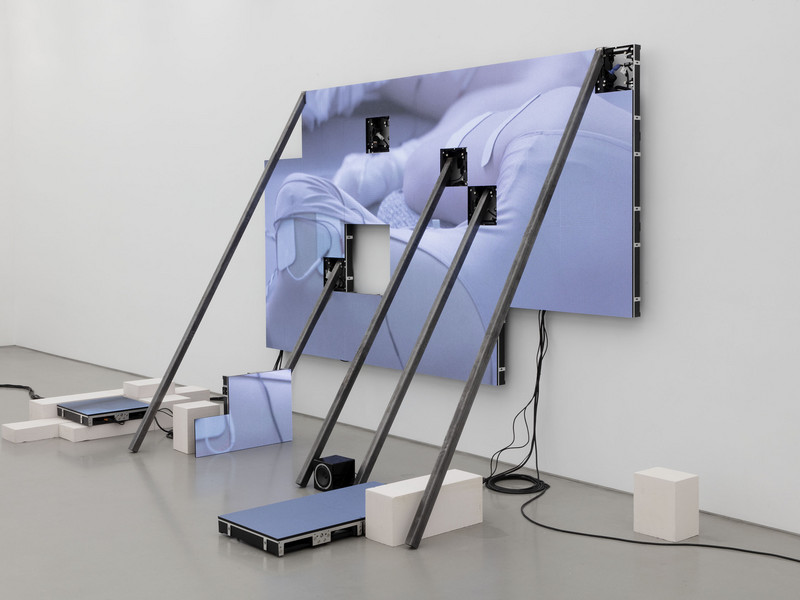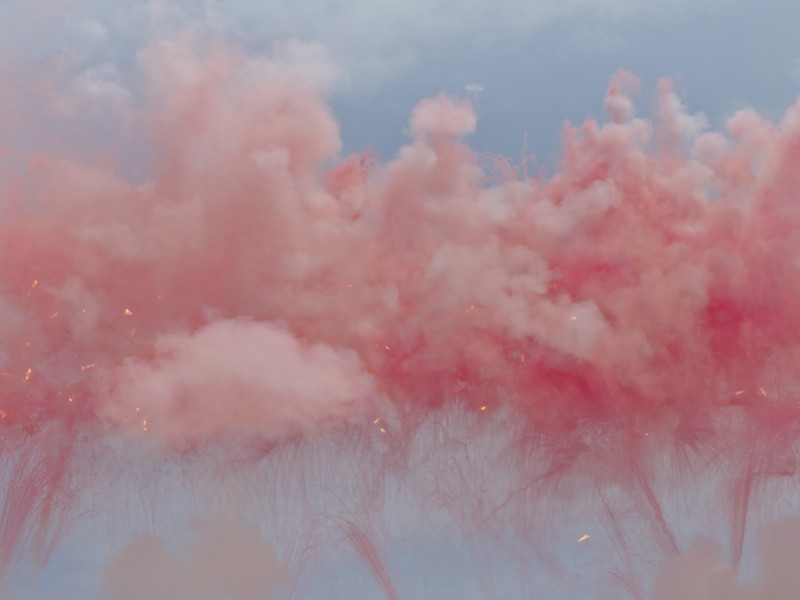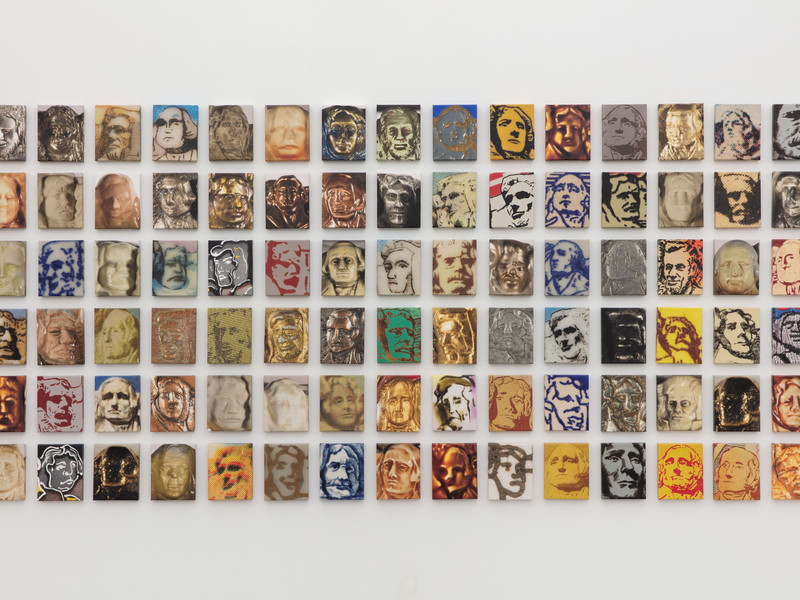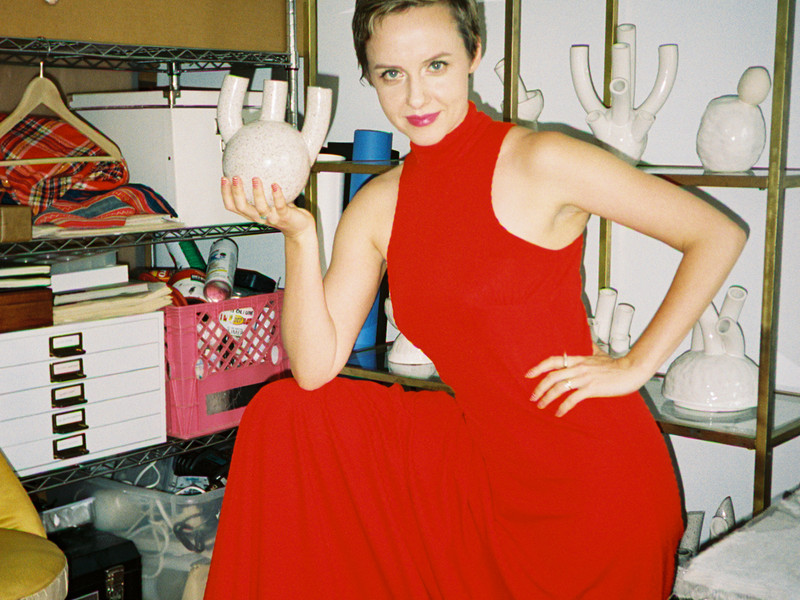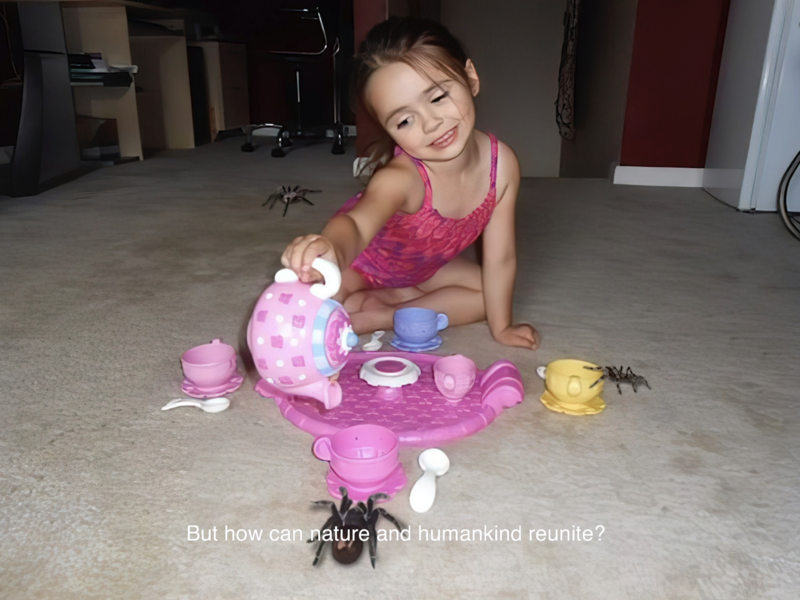Snakes and Submission

Catalina was seated amongst cardboard boxes when she answered my FaceTime call. She had a small black crescent moon drawn on each of her cheeks. It was 10 pm on a Monday and she had been unpacking all day in her new home in New Haven where she will be attending Yale for her MFA.
Are those tattoos?
No haha I just draw these on sometimes as part of my makeup. I saw an old portrait of a woman from the Song Dynasty with moons on her cheeks and I really liked it.
I know you’ve moved around a lot, but where are you originally from?
I was born in Chicago to Chinese immigrants, raised in a trashy white suburb in Illinois, then I lived in a trashy racist highway town in North New Jersey until moving to St. Louis for school.
How do you navigate your practice and the art world, or the real world for that matter, as a female Chinese-American artist? I know this is something you touch on in your work.
Well when I first started allowing identity to creep into my work—or flood into my work—I was all about excavating my oppression, injustices I had experienced specifically as an Asian-American. Losing my mother tongue—Mandarin– having this cultural shame and self-loathing bred into me….almost every east Asian-American young artist I know has gone through this phase. And with young Asian-American women, it's often making work specifically about their relationships with white men and how that's fucked them up….and I did that too, really intensely, for a minute. But recently I’ve been more interested in how that fits into a far wider power structure.
You've mentioned that you like to allow the viewer to take an active role in deciding how they perceive your work. How did you do that with your most recent installation, “sister, lover, destroyer”?
I really just don’t want to be prescriptive with how the work is read. Some artists can get pretty anal-retentive about the viewer receiving exactly the signals that they sought to broadcast. I make the work, and it comes from a particular place. Once it’s in the world it takes on its own life and I’m okay with that.
So, what do you think the show’s title “sister, lover, destroyer” conveys to its audience?
...I think this show was speaking directly to ideas of sisterhood, love over a man’s desire, violence, anxiety, things getting in the way of sustainable relationships, and personal and interpersonal growth.
I thought it was really effective how you used something from your heritage, a Chinese folktale, to talk about imbalances of power.
Yeah! “sister, lover, destroyer” is based on The Legend of the White Snake -- which is pretty ubiquitous in China, as much as Little Red Riding Hood is in the West. The white snake and the green snake are powerful demon-goddess-snake best friends. One day, the white snake falls in love with this clumsy scholar man. White snake says, “I want to give up my immortality to be with this man and have his child”, and green snake is like, “what the fuck” …Over time, as the mythology and economy of true love got popularized, the myth says true love is the route to salvation not your awesome fucking friendship with your witch friend. I was working through the intricacies in that narrative and applying it to personal scenarios, and our current fucked up political climate.
What were your main influences for the exhibit?
In the several months leading up to the show I made a conscious decision not to look at other art. I was all into demons, chains and weapons, then I got to New York with all of my work, and as I was installing and looking at other shows, I started seeing demons and chains in everyone’s work. There’s definitely something in the collective consciousness right now, for a number of reasons that extend probably way beyond our president. Everyone is thinking about being in hell. Somehow all this shared anxiety converged into us all making the same thing.
How do you think you’ve grown and changed as an artist? It seems like you’re moving toward more immersive, conceptual exhibitions [than in your previous work].
I was using the image of the phallus as a crutch in my work for a while. My entire identity and sense of self-worth growing up was formulated around and in relation to white masculinity… About a year and a half ago, I escaped from an abusive relationship with a white man who by all accounts would be considered an ideal member of society: conventionally attractive, charming, from a well-off family…there was a sexual assault investigation and I pursued charges, and it all ended unsurprisingly bad for me… Elegy for Marco was a cap to this vein of my work. This was the point where I decided to stop lending power to a thing by having it always present.
How do you see your role as an artist?
For me, it’s trying to work through the unknowable. I tussle with these existing conditions in the world, many of which happen to deal with inequity, and that’s unavoidably political. My experiences in my body as who I am is unavoidably political.

